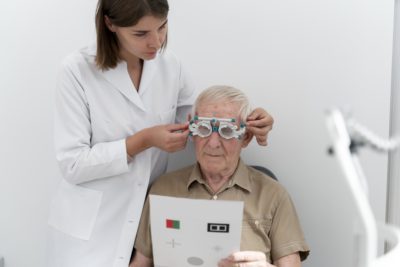|
Synopsis: Learn about retinoblastoma, a rare but serious eye cancer in children. Explore its causes, symptoms, and treatment options, as well as the importance of early detection and genetic counseling for families. |
As parents, we cherish the well-being of our children above all else. When it comes to their health, we want to be informed and vigilant, especially when dealing with rare and serious conditions like retinoblastoma. Let’s delve into the world of retinoblastoma in children, exploring its causes, symptoms, diagnosis, and treatment options.
What is Retinoblastoma?
Retinoblastoma is a rare form of eye cancer that primarily affects young children. The average age of children is 2 when it is diagnosed. This malignant tumor originates in the retina, the crucial light-sensitive tissue located at the back of the eye. Its role is to transmit visual signals to the brain, making it an essential component of our vision. Further, it is highly recommended to visit your ophthalmologist every 6 months after your treatment.
Causes of Retinoblastoma
Retinoblastoma is often linked to genetic mutations in the RB1 gene. These mutations can occur sporadically, seemingly out of nowhere, or they can be inherited from a parent who carries the mutated gene. Understanding the genetic basis of retinoblastoma can be crucial for both diagnosis and potential family planning decisions.
Recognizing the Symptoms
Detecting retinoblastoma in its early stages is crucial for effective treatment. Common symptoms include:
-
White Pupil
Often referred to as “cat’s eye” or “leukocoria,” this is a key indicator. Instead of the typical red eye in photos, the child’s eye appears white or cloudy.
-
Strabismus
Crossed eyes or other alignment issues with the eyes.
-
Vision Problems
Noticeable changes in vision or poor vision.
-
Eye Redness and Swelling
In some cases, the affected eye may become red and swollen.
-
Eye Pain:
In advanced cases, the child may experience eye pain.
Diagnosis and Staging
Diagnosing retinoblastoma involves a comprehensive eye examination, often performed under anesthesia for young children. Various imaging techniques, such as ultrasound, CT scans, and MRI, help determine the extent of the tumor and whether it has spread beyond the eye. Staging is crucial for treatment planning.
Treatment Options
Treatment for retinoblastoma varies based on the stage and severity of the condition. Options include:
-
Chemotherapy – Medications can shrink the tumor.
-
Radiation Therapy – Targeted radiation is used to destroy cancer cells.
-
Cryotherapy and Laser Therapy – Effective for treating smaller tumors.
-
Surgery –
In severe cases, the eye may need to be removed (enucleation).
Prognosis
A child’s prognosis for retinoblastoma depends on factors like the stage at diagnosis, the tumor’s spread, and response to treatment. Early detection and prompt treatment can often lead to a positive outlook, with many children retaining their vision and even their eyes.
Genetic Counseling
For cases involving genetic mutations, genetic counseling may be recommended to assess the risk of retinoblastoma in future generations. This helps families make informed decisions about family planning and managing the genetic risk.









